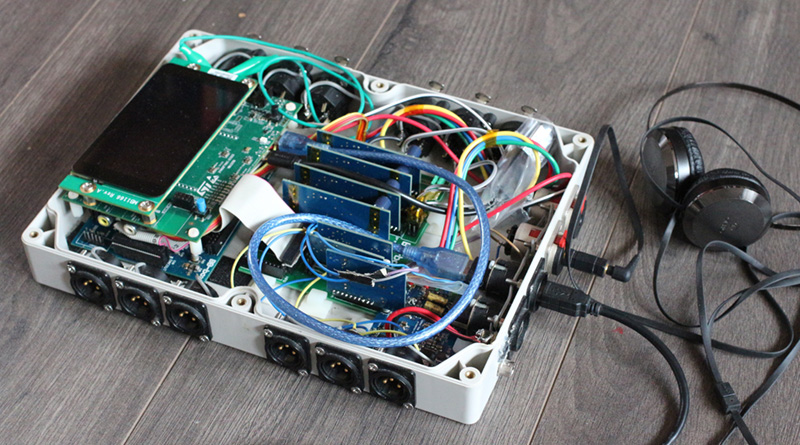Field recorders, or backpackable audio recorders with a few XLR jacks and an SD card slot, are a niche device, and no matter what commercial field recorder you choose you’ll always compromise on what features you want versus what features you’ll get. [Ben Biles] didn’t feel like compromising so he built his own multichannel audio DSP field recorder. It has a four channel balanced master outputs, with two stereo headphone outputs, eight or more inputs, digital I/O, and enough routing for multitrack recording.
Mechanically, the design of the system is a 3D printed box studded on every side with various connectors and patch points. This is what you get when you want a lot of I/O, and yep, those are panel mount connectors so get ready to pony up on the price of your connectors. The analog front end is a backplane sort of thing on a piece of perfboard, containing an eight channel differential I/O.
Of course any audio recorder is awful to use unless there’s a great user interface, and for that you can’t get any better than a high-resolution touchscreen on a phone. This led [Ben] to use Bluetooth to connect to an app showing the gain, levels, a toggle for phantom power, and a checkbox for line or microphone. If that’s not enough there are also some MIDI knobs for volume, because MIDI is still great for user input. It’s everything you want in a portable recording rig, and yes, there is a soundcloud demo. You can also check out a demo video below.

















When the easiest way to connect inside enclosure is BT, you know that phones are not meant to cooperate. But THAT is the definition of a hack. Props to [Ben] for making everything work! I would probably stop and tried to make something less hacky, spend too much time and give up halfway.
That box does not look 3D printed… It looks more like a electrical utility box that you can buy off the shelf at hardware stores…These come even in IP65 (at least that’s what the manufacturer says), so theoretically with a bit of siliconing around the connectors, it could be made waterproof, which most of the commercial offerings aren’t.
Agree. That box is NOT printed.
Unless somebody else printed it, it is not 3D printed.
https://hackaday.io/project/7041-multichannel-audio-dsp-field-mixer-recorder/log/27384-audio-mixer-gets-a-box
That makes it even more of a hack!
“a great user interface, and for that you can’t get any better than a high-resolution touchscreen on a phone”
I really hope this is subtle sarcasm.
Not that subtle.
I love Hackaday! I just spent about a half hour looking up all these IC’s evaluation kits and terms (XLR, phantom power). Though, I feel smarter I’m not sure if it was the best use of my time. LOL! Cool project. Always interesting how people source things together to make something that is useful.